NASA’s advanced X-Ray Observatory is named after a brilliant Indian scientist & Nobel Prize-winner Subrahmanyan Chandrasekhar, a Flagship-class space telescope is an Earth satellite in a 64-orbit
Yet, amidst this constellation of technological marvels, Chandra holds a special plac
NASA’s advanced X-Ray Observatory and the brilliant Indian scientist it is named after - Chandra X-ray Observatory
In an era of astronomical wonders and interstellar curiosities, NASA's advanced Chandra X-ray Observatory emerges as a beacon of celestial brilliance. This Flagship-class space telescope, serenely orbiting our planet in a 64-hour cycle, is a testament to not just human ingenuity, but also to the rich tapestry of international collaboration and shared knowledge. More poignantly, the Chandra Observatory stands as a living tribute to an iconic figure in the annals of astrophysics: the Indian-American Nobel laureate, Subrahmanyan Chandrasekhar. As of 2023, this magnificent observatory continues its mission, gazing deep into the vastness of space.
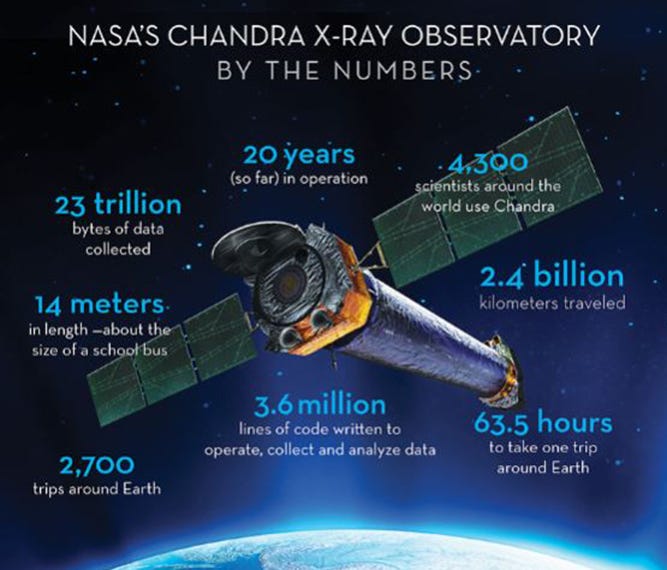
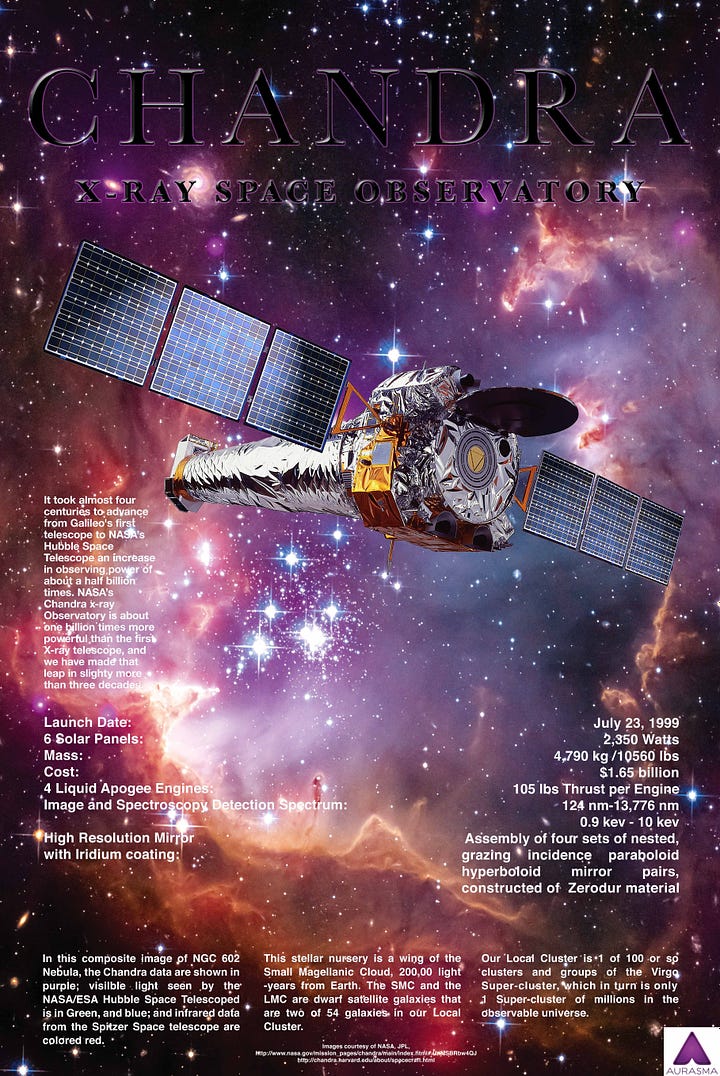
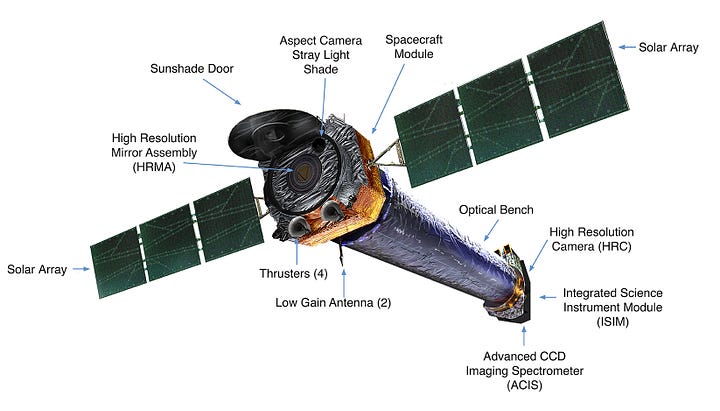

From time immemorial, the vast expanse of the cosmos has mesmerized earth-dwellers. Each shimmering star and distant planet has incited tales of wonder, ambition, and the human spirit's relentless pursuit of knowledge. And so, as the world advanced, a consortium of nations, from the powerhouses of Russia, the US, Europe, to the eastern giants of China and Japan, and the innovative spirit of India, took the helm, propelling humanity's aspirations from terrestrial ground to extraterrestrial wonders. Their combined efforts have mapped out our universe's nooks and crannies, with approximately 50 daring expeditions to Mars and a staggering 146 to our closest neighbor, the Moon. While some of these missions faced the heartbreaking shadow of failure, each one, be it flybys, orbiters, landers, rovers or crewed expeditions, has enriched our understanding and ignited our imaginations.

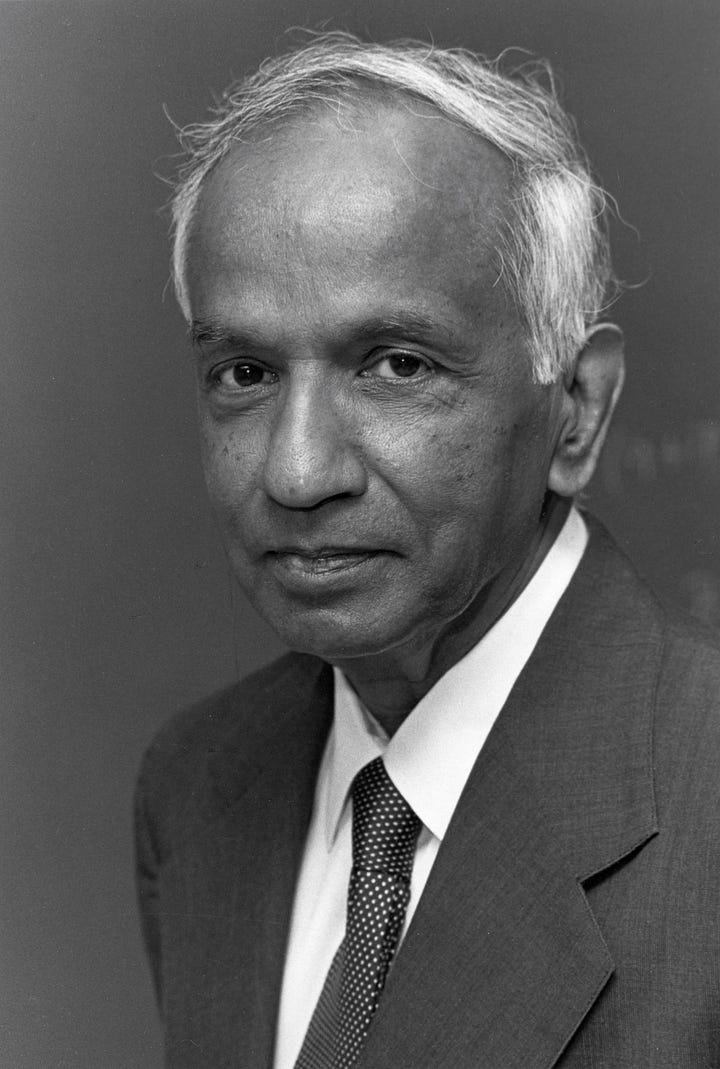


Heralding India's prowess in space exploration, the nation's heart swelled with pride on August 23. India's Chandrayaan 3, the third luminary lunar mission, gracefully executed a soft landing on the silvery plains of the Moon. The aftermath of this monumental feat? A diligent quest to unravel the Moon's elemental secrets, from understanding its seismic movements to diving deep into its thermophysical characteristics.
Yet, our astronomical adventures aren't just confined to planetary bodies. The heavens have beckoned, and we've responded with telescopes, those silent sentinels of space. Countries like Russia, the USA, Europe, and China have orchestrated symphonies of these orbital observatories, each designed to pierce through the atmospheric veils and gaze at the universe in its unadulterated splendor.
Among these celestial beholders, the Hubble Telescope, launched in 1990, is almost legendary. It has been mankind's window, offering breathtaking visuals of galaxies, tantalizing billions of light years away. Not far behind in acclaim is the James Webb Space Telescope, boasting its resplendent 6.5-metre gold-plated mirror. Launched as the world bid adieu to 2021, it settled into its orbit by January 2022, ready to further our cosmic odyssey.
Yet, amidst this constellation of technological marvels, Chandra holds a special place. It’s not just an observatory; it's a homage to a visionary, bridging the gap between nations and celebrating the unifying spirit of scientific pursuit.
In the vast expanse of space, amidst the eternal silence and the infinite mysteries it holds, there orbits a sentinel, a guardian of secrets, tirelessly peering into the cosmos. This sentinel, launched in 1999, is NASA's Chandra X-ray Observatory. As we stand at the crossroads of 2023, this remarkable device continues its mission, unearthing secrets from the universe's darkest corners.
The Chandra isn't just another space telescope; it carries the weight of a legacy. Named after the luminary Indian-American astrophysicist Subrahmanyan Chandrasekhar, a Nobel laureate, the Chandra X-ray Observatory stands as a testament to this genius's unparalleled contributions to the world of astrophysics. The recognition of an Indian-born scientist in such a monumental manner pulsates with pride, not just for a community, but for humanity at large, celebrating the universality of knowledge and discovery.
From the four monumental observatories NASA proudly launched between 1999 and 2003, Chandra holds a unique place. While its siblings—the legendary Hubble Space Telescope, the penetrating Compton Gamma Ray Observatory, and the insightful Spitzer Space Telescope (which graced our skies from 2003 to 2020)—each have their distinct contributions, Chandra's mission is to tap into a specialized energy realm of space.
This mission began aboard the iconic Space Shuttle Columbia in July 1999. Before its grand journey began, the observatory was known as the Advanced X-ray Astrophysics Facility. But, much like the importance of naming a child, NASA understood the weight behind a name. Thus, they launched a contest, inviting the global community to christen this X-Ray Observatory. From over six thousand entries, the name 'Chandra' emerged victorious. Translating to 'moon' or 'luminous' in the ancient Sanskrit language, it's more than just a name—it's a legacy, a tribute, and a beacon of hope in the exploration of the unknown.
In the grand tapestry of space exploration, the Chandra X-ray Observatory stands out, not just for its technological prowess but for the rich legacy it carries. It's a tribute to the genius of one and the aspirations of many. As Chandra continues its sojourn, we are reminded of the wonders of exploration and the boundaries of human achievement, forever pushing the horizons of what we know and understand.
Suspended in its orbit around Earth, the Chandra X-ray Observatory is more than a mere piece of equipment. It is a celestial detective, ceaselessly scanning the vast expanse of the universe, seeking out the brilliant flashes of high-temperature events that manifest as X-rays. This form of highly energized light remains beyond human perception, yet it holds a wealth of information about the universe's most thrilling phenomena.
Imagine trying to read a book in the dark. For our eyes, this is impossible. Similarly, these X-rays, brimming with vital astronomical data, find it challenging to penetrate through the Earth's protective atmospheric blanket. Enter Chandra, a guardian of cosmic mysteries. It stands as an invaluable ally for astronomers, capturing these elusive X-rays and offering insights that remain otherwise veiled from our gaze.
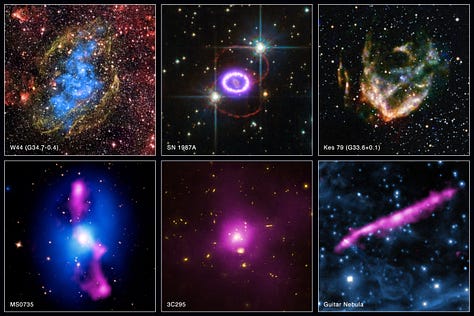
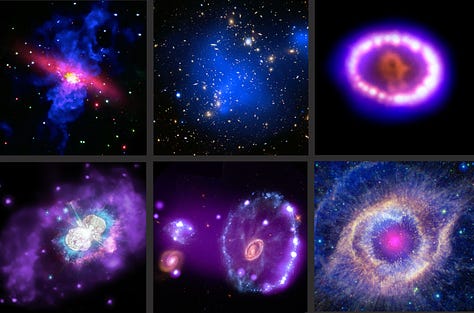

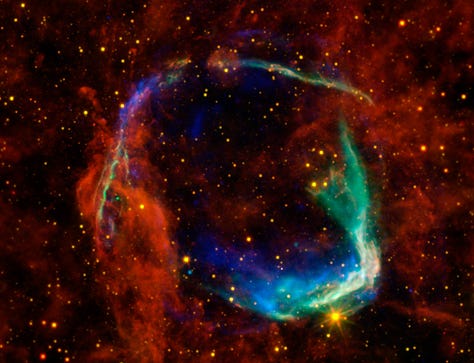


How does Chandra achieve this? It employs a series of intricate tools, each a marvel in its engineering. Gathering X-rays that have traveled unimaginable distances, some journeying from as far as 10 billion light-years away, Chandra's High-Resolution Camera (HRC) acts as a translator. It deciphers these X-rays, rendering them into visual images that astronomers can then analyze. Furthermore, Chandra's arsenal includes specialized equipment, meticulously designed to measure the intensity and temperature of these X-rays, deepening our understanding of their origin and characteristics.
However, the genius behind Chandra doesn't stop here. Traditional telescopes used for visual observations are equipped with dish-shaped mirrors. Were these mirrors to be used for capturing X-rays, the rays would be absorbed, making the endeavor futile. Chandra's design, however, breaks this mold. It employs unique barrel-shaped mirrors, which run almost parallel to the incoming X-rays. This ensures that the X-rays graze these mirrors and converge to a focal point, with a precision so fine that it's akin to concentrating them on a spot merely half the width of a human hair. Such meticulous design ensures that these rays, rather than getting absorbed, get reflected and captured in their entirety.
In the world of astronomy, the Chandra X-ray Observatory isn't just another tool. It's a symphony of precision, engineering, and vision. As it continues its cosmic dance, we stand enthralled, waiting for the next revelation, the next glimpse into the vast and mysterious realms of our universe.
Delving into why these telescopes are invaluable, it's paramount to recognize that they offer us the privilege of witnessing phenomena otherwise draped in cosmic invisibility. These telescopes paint detailed portraits of high-energy marvels like colossal cosmic explosions, the enigmatic black holes, and dense neutron stars. In addition, by capturing X-rays, these observatories add depth to our understanding of celestial objects, offering a richer, multi-dimensional perspective of bodies that also radiate visible light.
Among these path-breaking instruments, the Chandra X-ray Observatory stands out, not just for its advanced capabilities but for its profound legacy. Orbiting our planet at altitudes almost 200 times higher than the renowned Hubble Space Telescope — a staggering one-third of the moon's distance — Chandra stands tall as NASA's third exemplary observatory aimed at cosmic introspection from Earth's vantage.
"Six cosmos images captured by Chandra" – this statement is more than just a pictorial representation. It's a testament to Chandra's monumental contribution to space science.

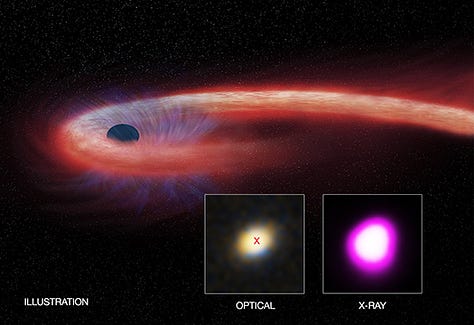



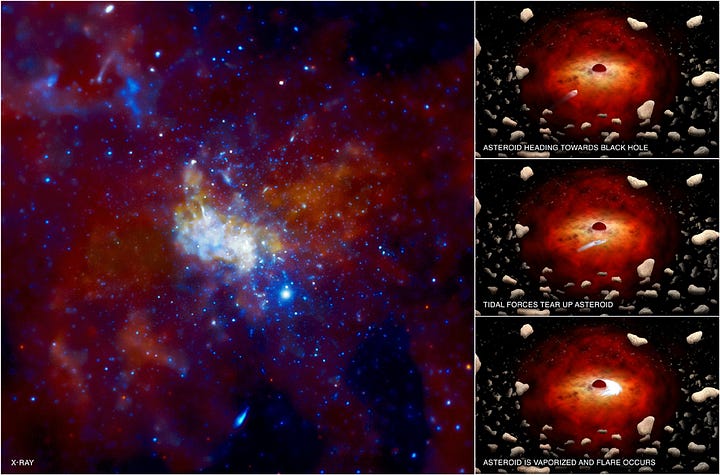
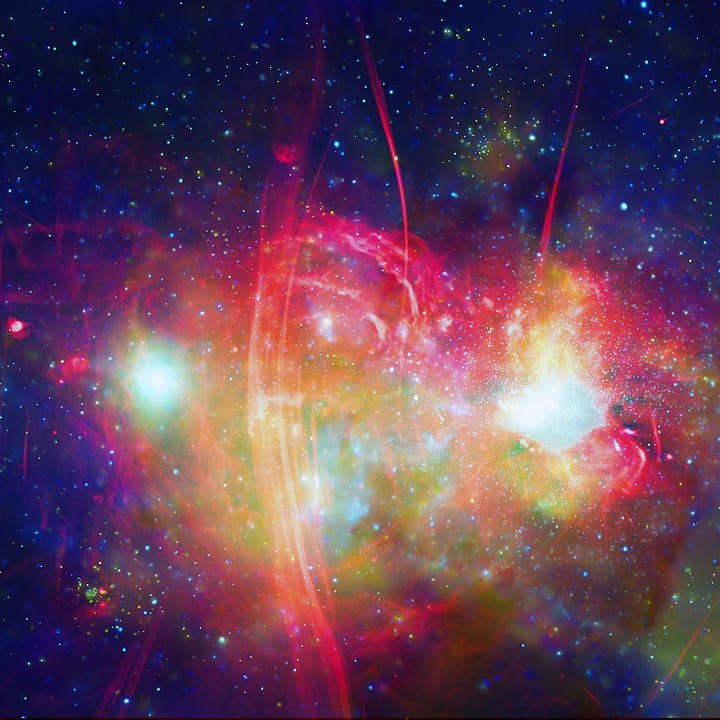
A Name with Legacy: How 'Chandra' was christened
Flashback to 1976: The seeds for the Chandra Observatory were sown by Riccardo Giacconi and Harvey Tananbaum, then envisioned as the Advanced X-ray Astrophysics Facility (AXAF). While the initial blueprints of AXAF were taking shape, 1978 saw NASA dispatching Einstein (HEAO-2), the pioneering imaging X-ray telescope, into space's vastness. This venture set the stage for AXAF's evolution, recalibrating its trajectory to an elliptical orbit, reaching, at its pinnacle, a third of the moon's distance.
Fast forward to 1998: Amidst its development journey, AXAF underwent a rechristening. An international contest launched by NASA, aimed at renaming this monumental project, witnessed a whopping 6,000+ entries. Emergent victors from this contest, Tyrel Johnson and Jatila van der Veen, suggested a name that resonated with a legacy of genius - 'Chandra', a tribute to Nobel laureate Subrahmanyan Chandrasekhar.
Chandrasekhar's monumental research, which charted the maximum mass of a white dwarf star, not only widened our understanding but also provided key insights into stellar remnants like neutron stars and black holes. This significant contribution is a testament to why the observatory is aptly named after him.
As we reflect upon these celestial marvels, it serves as a potent reminder of our universe's grandeur and the genius of minds that help us unravel it.
An elegant photograph captures a profound moment in time — Lalitha Chandrasekhar stands gracefully on the left, her gaze reflecting pride and remembrance. Flanking her are the contest victors, Jatila van der Veen and Tyrel Johnson, smiles portraying the awe and respect they hold for the legacy they have come to celebrate. This image, nestled within the archives of the Chandra chronicles, is not just a snapshot — it's a testament to the life and accomplishments of a remarkable physicist.
Subrahmanyan Chandrasekhar, often fondly referred to as 'Chandra', was not just a physicist — he was a trailblazer. In 1983, the world recognized his profound contributions to the realm of astrophysics when he was jointly awarded the Nobel Prize in Physics with William A. Fowler. This accolade was a salute to their groundbreaking "theoretical studies of the physical processes vital to the structure and evolution of stars." A significant portion of today's understanding of the eventual stages of massive stars and the enigmatic black holes stem from Chandra's mathematical scrutiny of these celestial entities.
One can't delve into his contributions without speaking of the renowned Chandrasekhar limit — a pivotal discovery in astrophysics. This theorem, at its essence, propounds that the mass of a white dwarf can't surpass 1.44 times that of our Sun. Any star that exceeds this limit is destined to undergo further collapse, possibly becoming a neutron star or a black hole.
Beyond his groundbreaking research, Chandra's literary contributions enriched the world of astrophysics. With a prolific ten books to his name, he also donned the hat of an editor for the esteemed Astrophysical Journal for nearly two decades, ensuring that the torch of knowledge was passed on to generations of budding astrophysicists.
In a posthumous tribute, four years after he left the world in 1995, the Chandra X-Ray Observatory was christened in his honor. This stellar observatory, gazing deep into the cosmos, is a fitting homage to a man who dedicated his life to unraveling the universe's mysteries. Every time the observatory captures an image or sheds light on a cosmic event, it's a reminder of Chandra's indelible imprint on the world of science.
Chandra's Celestial Odyssey: 1999-2023 and Beyond
Few ventures into the vast cosmos have been as revealing and transformative as the journey of the Chandra X-ray Observatory. Commissioned at the cusp of the new millennium, Chandra embarked on what was to be a 5-year odyssey. However, such was its promise and performance that its expedition has not only spanned decades but has also vastly enriched our understanding of the universe.
Its tale begins with a delay, as most monumental projects often do. Originally slated to be catapulted into the cosmos in December 1998, the Space Shuttle Columbia orbiter finally sent it on its journey on July 23, 1999. Right from its inception month, Chandra was not one to wait. It started beaming back data to Earth, communicating with the Chandra X-ray Centre in Cambridge, Massachusetts, with MIT and Northrop Grumman Space Technology providing crucial operational support.
Chandra's brilliance was immediately evident. Though its intended operational span was a mere 5 years, it was apparent to NASA that this was no ordinary observatory. In recognition of its stellar performance, NASA decided to extend its lifespan in 2001. Further bolstering its longevity, a study by the Chandra X-ray Centre in 2004 posited that the observatory was equipped to serve for at least a decade and a half. Yet, here we are in 2023, with Chandra's mission still actively illuminating the mysteries of our universe.
The legacy of Chandra isn't just in its longevity but in the tapestry of cosmic wonders it has unveiled. From our own solar system to distant exoplanets, white dwarfs, resplendent supernovas, enigmatic neutron stars, the dark allure of black holes, to grand galaxies and quasars, and even colossal galaxy clusters — Chandra has been humanity's lens to these celestial phenomena.
Its recent dispatches have been nothing short of spectacular. Astronomers and space enthusiasts alike have marveled at its depiction of an elliptical galaxy nestled 55 million light-years away in the Virgo Cluster. Then there's the revelation of Black Hole Pairs, a colossal 760 million light-years away, and the enchanting spiral galaxy, a comparatively close 32 million light-years from our home planet.
As we stand in 2023, looking back at Chandra's illustrious journey and anticipating its future discoveries, one thing is clear — through Chandra, we aren't just observing the universe, we are understanding it. Every image it beams back, every nuance it captures, brings us closer to deciphering the cosmic story of existence.
Chandra's Deep Dive into the Abyss of Black Holes
The universe is vast and mysterious, with phenomena that boggle the mind and challenge our understanding of the very fabric of existence. Black holes, those enigmatic entities where gravity pulls so much that not even light can get out, have always captured the human imagination. Chandra, with its eagle-eye and unparalleled observation prowess, has been at the forefront of furthering our understanding of these celestial giants.
Chandra's revelation on August 22 about the tidal disruption event is a testament to the power of these phenomena and the observatory's capability. Situated a staggering 290 million miles away from our blue planet, a gargantuan black hole tore a star, three times the size of our Sun, to shreds. This stellar obliteration, as confirmed by Chandra's official Twitter handle, marks one of the most colossal tidal disruption events we've come to know.
But Chandra’s tryst with black holes doesn't end here. Its vast repertoire encompasses the study of various celestial oddities, from supernova remnants and starburst galaxies to the most distant and peculiar objects in the cosmos. Starburst galaxies, for instance, have piqued interest due to their anomalous concentration of intermediate-sized black holes. These black holes, as discovered by Chandra, are on an inexorable journey, coalescing at the galaxy's heart, melding, and morphing into even larger entities.
Diving closer to home, 2013 bore witness to Chandra’s detection of an unprecedented outburst from our very own Milky Way's behemoth - the supermassive black hole Sagittarius A, or Sgr A. Initially believed to be a gas cloud, this was later identified as a cloud enfolding a compact celestial object, its nature reacting intriguingly with Sgr A*.
But perhaps one of Chandra's most notable contributions came in 2017, during the massive explosion caused by the cataclysmic merger of two neutron stars. While Chandra was among the first to pick up this high-energy light pulse, it was the synergy with the National Science Foundation's Laser Interferometer Gravitational-wave Observatory (LIGO) that led to the groundbreaking discovery of gravitational waves associated with the event.
In its quest to unravel the universe's secrets, Chandra continues to be a beacon, illuminating the dark corners of the cosmos and bringing them closer to our understanding. Every observation, every image, and every data point not only adds to our knowledge but fuels our insatiable curiosity about the universe and our place in it.
Chandra: The Torchbearer to Stars Beyond Our Reach
In the annals of space exploration, the Chandra X-ray Observatory stands out as an exemplar of human ingenuity and technological prowess. For over two decades, it has tirelessly peered into the depths of space, demystifying the cosmos and bringing the farthest corners of the universe closer to our grasp. But Chandra’s contributions are not just confined to pure scientific discovery; it has also paved the way for human ambitions that stretch beyond our home planet.
Take, for instance, its meticulous decade-long study of Alpha Centauri, our closest stellar neighbor. Located just a shade over four light-years away, this tri-star system has been the stuff of sci-fi legends and the cornerstone of mankind's interstellar aspirations. In 2018, when Chandra unveiled its findings on Alpha Centauri, it was not just an academic exercise. These revelations have profound implications for missions like Breakthrough Starshot, an ambitious endeavor aiming to send a fleet of tiny nanocrafts to this neighboring star system. The ultimate objective? To probe for signs of life on distant exoplanets and perhaps, even establish humanity's first foothold in another star system.
NASA's image capturing the first light from a gravitational-wave event is a poignant reminder of Chandra's monumental contributions. Beyond just being a scientific instrument, it has become a beacon of hope, symbolizing our quest to understand the universe and our place in it.
The fact that Chandra, initially slated for a five-year stint, is still going strong after more than 23 years is a testament to the robustness of its design and the dedication of its operators. As per the insights from Chandra's team in 2018, the observatory's well-maintained reserves ensure that it will continue to enlighten us for a few more years.
In a universe teeming with mysteries, Chandra serves as our torchbearer, illuminating the path as we embark on a quest to uncover the secrets of space. Whether it's identifying potential habitats for life or deciphering the physics of black holes, Chandra remains at the forefront, guiding us, inspiring us, and above all, reminding us of the boundless possibilities that await. As we stand on the cusp of potential interstellar journeys and dream of life beyond Earth, Chandra's legacy is a poignant reminder of how far we've come and the endless horizons that still await our exploration.
Support Us
While platforms like NDTV and 'The Wire' effortlessly garner funds under the banner of safeguarding democracy, we at Satyagraha walk a different path. Our strength and resonance come from you. In this journey to weave a stronger Bharat, every little contribution amplifies our voice. Let's come together, contribute as you can, and champion the true spirit of our nation.




